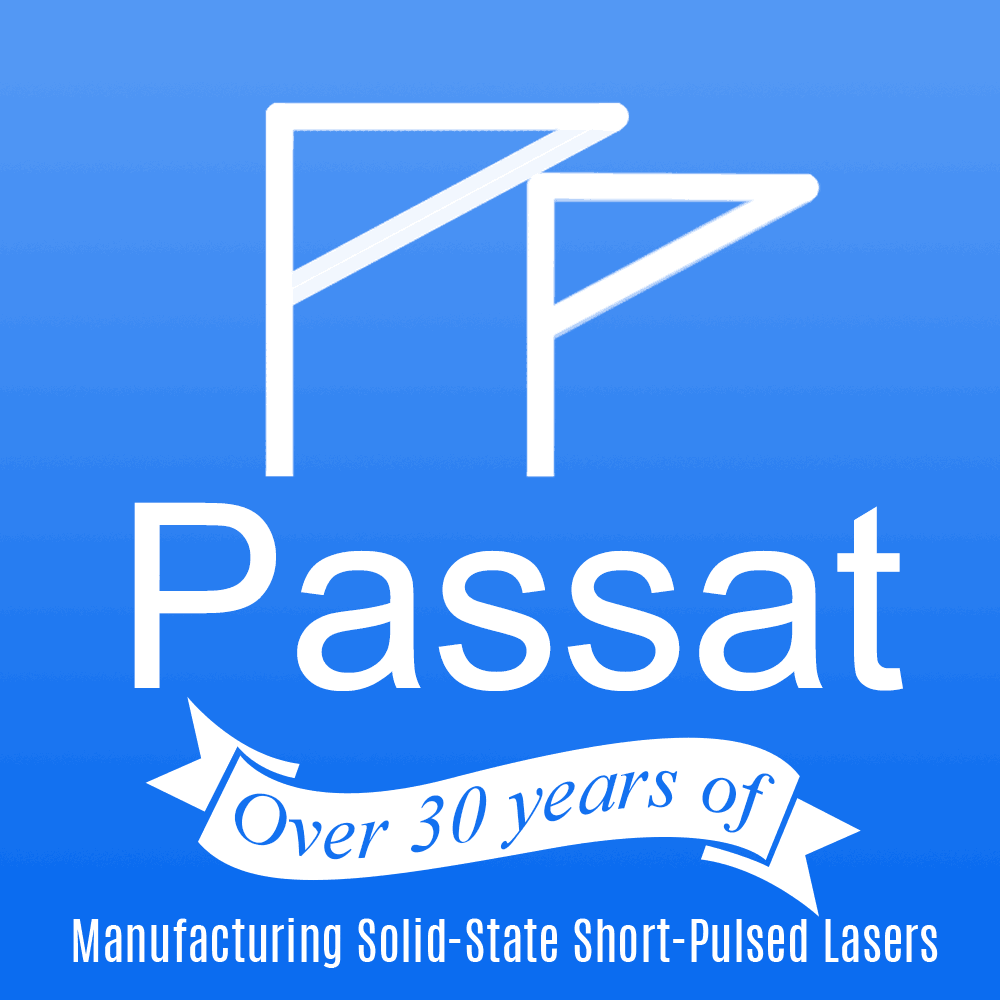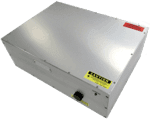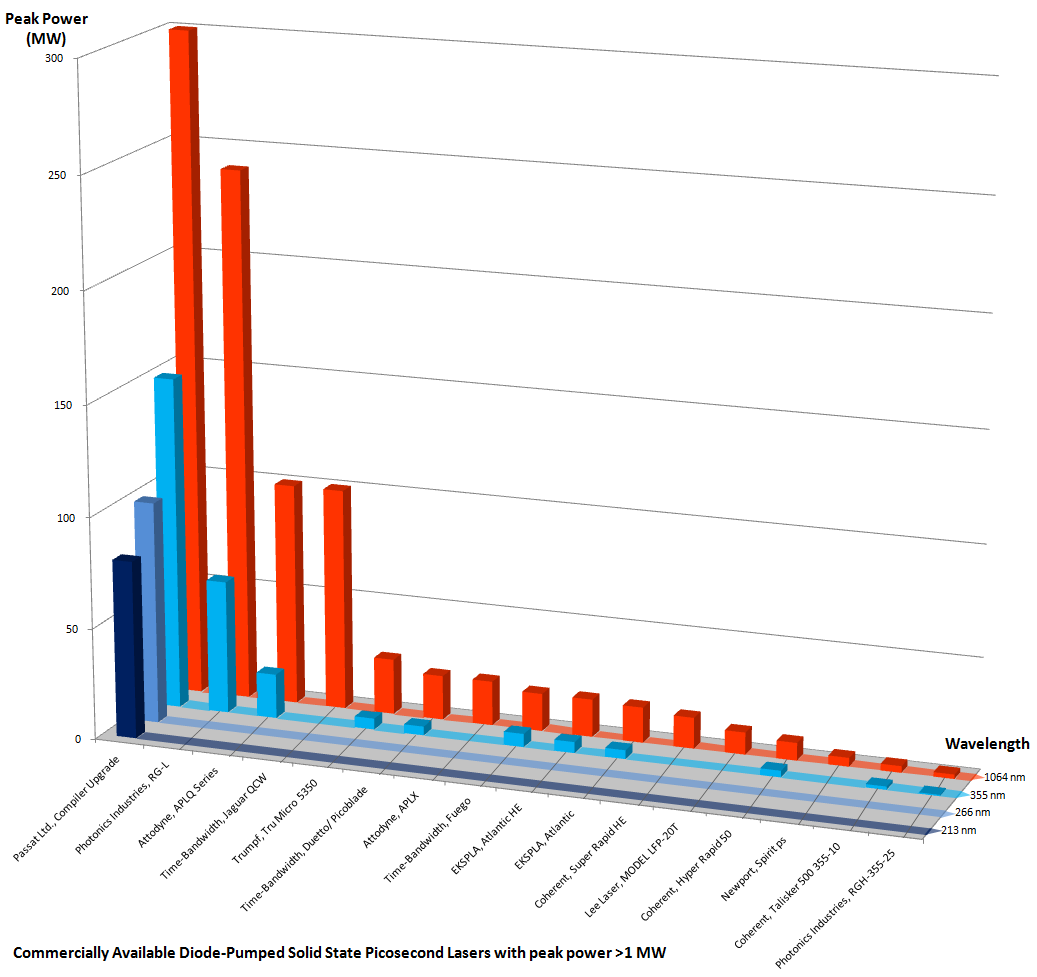Diode-Pumped Solid-State Air Cooled Picosecond Lasers
| Laser Model | Output Wavelength |
Pulse Energy (mJ) | Maximum Repetition Rate (Hz) | Pulse Length | Pumping | Cooling |
COMPILER
|
1064 nm | 0.55 | 400 | 8 ps | Diode | Air |
| 532 nm | 0.35 | 400 | 7 ps | Diode | Air | |
| 355 nm | 0.18 | 400 | 6 ps | Diode | Air | |
| 266 nm | 0.14 | 400 | 5 ps | Diode | Air | |
| 213 nm | 0.07 | 400 | 4 ps | Diode | Air | |
COMPILER UPGRADE-400
|
1064 nm | 2.5 or 5(optional) |
400 | 8 ps | Diode | Air |
| 532 nm | 1.5 | 400 | 6 ps | Diode | Air | |
| 355 nm | 0.6 | 400 | 5 ps | Diode | Air | |
| 266 nm | 0.3 | 400 | 4 ps | Diode | Air | |
| 213 nm | 0.15 | 400 | 4 ps | Diode | Air |
While high pulse repetition rates provide higher throughput, the high peak power of laser pulses is imperative for cutting different materials with sharper angle, thus significantly reducing material losses and increasing rate of cutting.
The high peak power is one of the most important features of Passat’s family of picosecond lasers, especially at short UV wavelengths (266 nm, 213 nm).
The chart below compares peak powers produced by commercially available DPSS picosecond lasers:
In particular, the high laser peak power is necessary for cutting transparent dielectrics (via cold ablation) with wide energy band gap such as diamond, sapphire, quartz and fused silica. Because, for high intensity laser beams two photons absorption dominates over single photon absorption, which is relatively low at wavelengths produced by most commercially available lasers. As the result, the ablation threshold drops, the ablation rate increases and the typical taper angle of cutting α becomes sharper, which increases the cutting depth. Sample cuts of different materials with different taper angle α are shown on the following page: Materials Processing
Our estimates, made for two photons absorption, allowed finding the cutting taper angle α which is determined by the following formula:
α ≈ λ/E1/2 x (ΘPD/γβτ)1/4 ,
where E is the laser pulse energy (in J), ΘPD is the energy characterizing photo-decomposition of dielectric by UV picosecond pulses (in J/cm3), β is the coefficient of two photon absorption (in cm/W), γ is the portion of energy absorbed by dielectric after deduction of radiative losses, τ is the laser pulse width (in sec).
The angle α does not depend on pulse repetition rate and depends very slightly on parameter (ΘPD/γβτ)1/4, characterizing the dielectric to be cut. But the dependence on the wavelength and pulse energy is rather strong. For example, for ΘPD = 10 kJ/cm3 , β = 4 cm/GW, γ = 0.5, τ = 5 ps, E = 100 μJ, λ = 266 nm, the angle α is equal to 6 mrad (or 0.350). Such an angle provides very low cutting losses. If anyone needs to cut a dielectric sphere half-and-half the losses will be about α/2, which for the example above corresponds to only 0.3%.
To cut material through the given thickness H, the volume of material removed will be proportional to α or ~
Thus,
Even at the same average power, Greater Pulse Energy Provides Faster Cutting.
- The highest pulse energy especially in the UV wavelength range, which reduces material losses.
- High energy short picosecond pulses allow micro machining of thicker materials, such as drilling and cutting of glass, diamond, ceramics, metals, etc. up to few millimetres thick.
- The most compact sizes (per energy unit), light weight and low power consumption among comparable picosecond UV lasers.
- Air Cooling.




